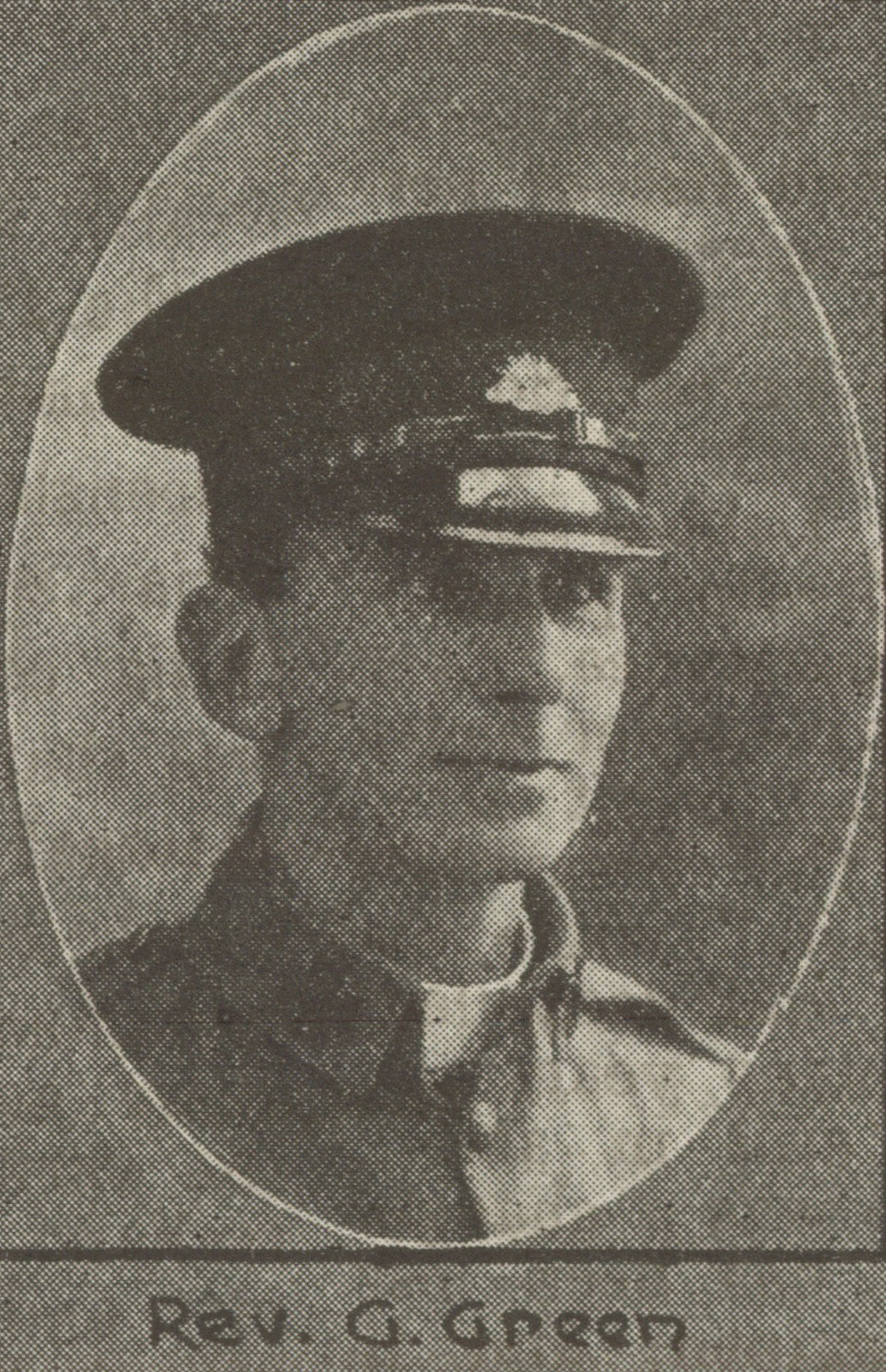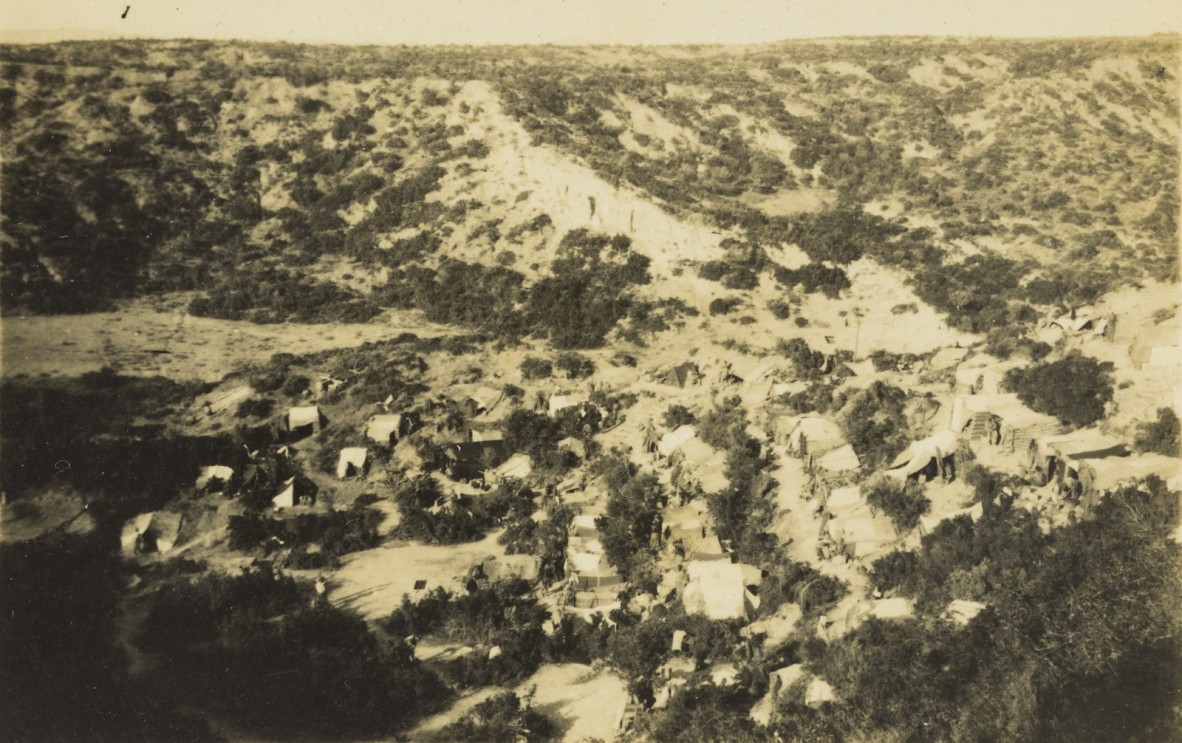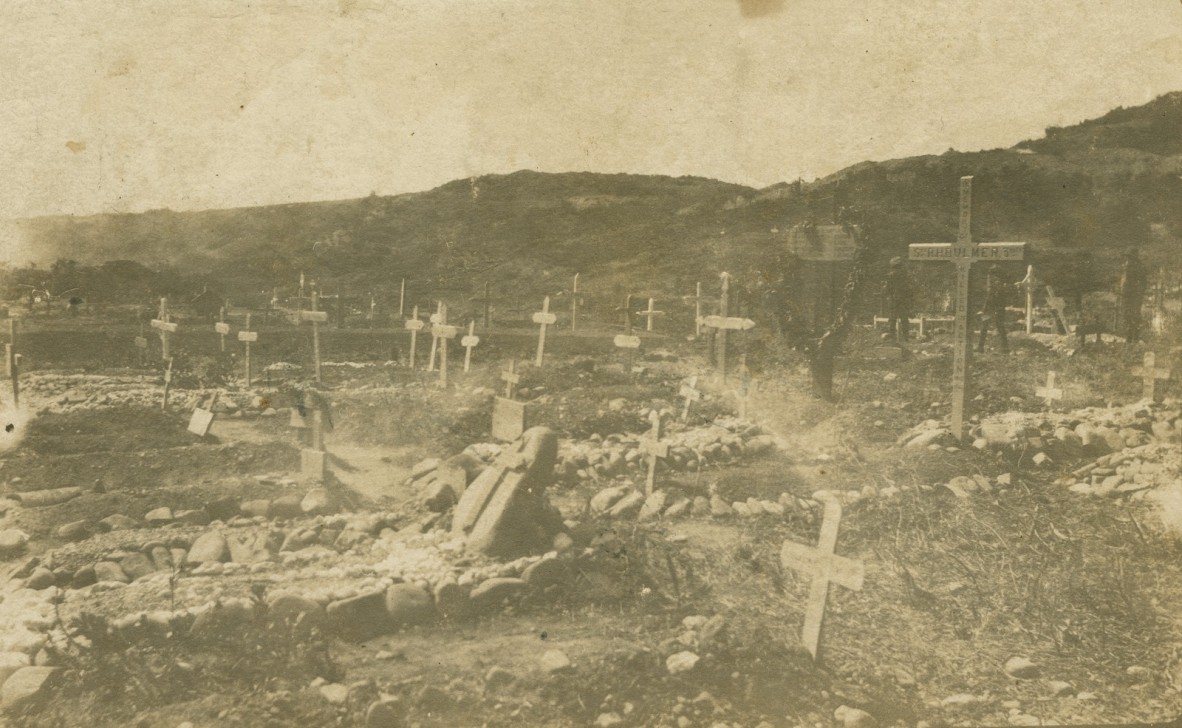Sharing Stories of Service: Reverend Green
By Pauline Gordon, Visitor Services Assistant, Anzac Square Memorial Galleries | 23 March 2022

Rev. G. Green, one of the soldiers photographed in The Queenslander Pictorial, supplement to The Queenslander, State Library of Queensland, Image number: 702692-19141017-s0021-0001
George Green was born in London and educated at Oxford University before becoming an Anglican minister in 1910. He migrated to Australia and had worked in Rockhampton and Emerald in central Queensland before enlisting in September 1914, only one month after war was declared. The Australian Army had, at the behest of representatives from the major Christian denominations, instituted the Australian Army Chaplains Department in December 1913. One chaplain from each of the four major denominations (Anglican, Presbyterian, Roman Catholic and Methodist) would be attached to each infantry and light horse brigade; they were commissioned as officers, initially appointed to Class IV, equivalent to a captain.
George was appointed as a chaplain and assigned to the 2nd Light Horse Regiment, as part of the 1st Australian Light Horse Brigade. He embarked for Egypt with the regiment from Melbourne on 21 October 1914 on the troopship HMAT Orvieto (A3).

Dugouts of the 2nd Light Horse Regiment, Gallipoli Peninsula, 1915, State Library of Queensland, M 946 Brett and Burley Family Records, Image number: M946-0081-0010
He and the regiment served on Gallipoli from May 1915, without their horses. George kept a meticulous and detailed diary of his time there, which today forms part of the 2nd Light Horse Association records. In it, he eloquently and vividly describes the horrors of the ill-fated campaign on the peninsula. He writes of battling the dust and heat and flies to provide whatever pastoral care he could.
With no training or induction into the military, and with little explicit instruction, most chaplains used their own initiative to determine the nature and extent of their duties. They did, however, have responsibility for burials. These had to be undertaken at night for safety reasons, and the chaplains spent much time recording the details of the dead and their place of burial, and arranging for the recovery of their personal effects. He often had to write to the family with details of the soldier’s death. George wrote of this important but distressing task: "I remember registering the resolve to be studiously callous about funerals otherwise it was obvious I would not last another week … I was among the burial party to go over into territory between the trenches. There I beheld a sight I never shall forget and struck a smell awful beyond anything I’ve experienced … I said committal over about fifteen bodies most of who were decayed beyond recognition."

Graveyard on the hill on Gallipoli Peninsula, ca.1915, State Library of Queensland, Image number: 31416-0001-0001
George wrote not only of the deaths he witnessed, but the sights and sounds of the war raging around him and the things he longed for most: "No Imperial men could be better than these infantry. Major Quinn killed. Lieutenant King Little wounded also Captn Forsyth. Oh it’s awful awful. The worst or the best can never be told. If one doesn’t check oneself you get longing and dreaming of a quiet nook in an English Village away from the sound of these guns & rifles & where all is peace again."
His diary entry on 19 May 1915 recorded the passing of John Simpson Kirkpatrick: “During this day 19th May the famous “Donkey man” was killed. A hero indeed. Since the landing he had plied his heroic and merciful trade carrying wounded men on his ‘donk’(“Queen Lizzie by Dreadnaught” was the breed according to him) from Quinns and neighbourhood back to the beach Ambulance. His energy, cheery wit and nonchalance were an inspiration to us all.”
In his dugout, he was just as susceptible to illness, lice and gunfire as his comrades in the trenches at the front and in November 1915 he was evacuated to the 19th Australian General Hospital in Alexandria with enteritis, a painful inflammation of the small intestine caused by unsanitary food and water. By December he was described as ‘dangerously ill’ – so ill in fact that he was sent back to Australia in January 1916 for rest and recuperation.
As soon as he became well enough, George returned to duty, arriving in Europe in October 1916 and was assigned to the 4th Division Headquarters. He also served with the 2nd Australian Auxiliary Hospital, 13th Brigade, which specialised in the fitting of artificial limbs as well as managing various AIF depots in England and France.
The Reverend George Green returned to Australia in 1919 and continued ministering to Anglicans in Melbourne before later returning to England, where he died in 1956. In the intervening years he was given the great honour of doing a reading at the dedication of the Australian War Memorial at Villers-Bretonneux in France. The memorial was officially opened by King George VI, who declared that ‘it perpetuates the memory of the Australian Imperial Force in France and Flanders, and of 11,000 of them who fell in France and have no known grave’.
Reverend Green and his wartime experiences are featured at Anzac Square Memorial Galleries.
This year we will be featuring 15 stories of service personnel from WWI to present. We encourage you to share your stories of service with us. To learn more about this campaign and how you can contribute, visit our website.
Comments
Your email address will not be published.
We welcome relevant, respectful comments.